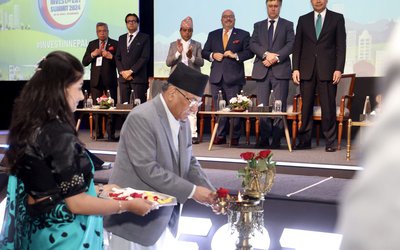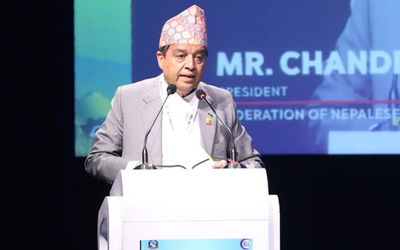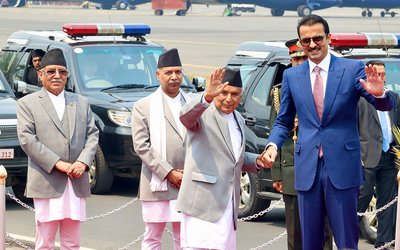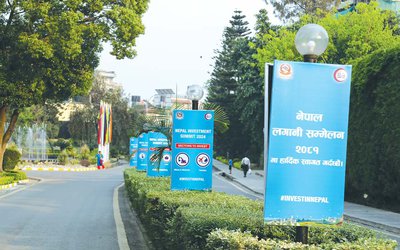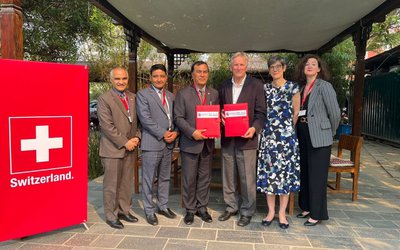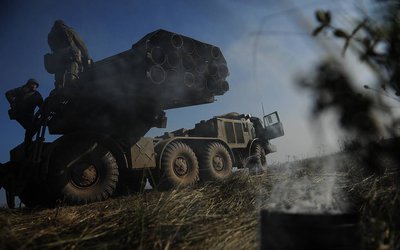So the neo-feudal party oligarchs from the four main parties (now splintered into many factions) were finally forced to admit the obvious: there is no legitimacy without a fresh mandate from the people. A Constituent Assembly elected for two years, and given two more as grace period, failed from its own contradictions and political incompetence to deliver a new secular, federal republic. The oligarchs and their rubber-stamp acolytes who populated the CA no longer represent the people of Nepal after their mandate expired; and Baburam Bhattarai is not really a prime minister: he is only a squatter, an illegitimate occupant with no moral authority to issue any decree whatsoever, and good only for the inauguration of seminars. Yes, fresh elections have to be held but for what? CA or a normal full-fledged parliament? Under which provisions? In how many constituencies? Decided by whom? When, November or April? And who rules the roost in the meanwhile? All these questions are now up in the air, and there is not one Loktantrick politician in sight in any of the main erstwhile big parties with any leadership veneer to elicit a respectful following among the Nepali people.
Earlier this week, a gathering was organized by a sister wing of RPP-N at Tripureshwar’s Hotel Orchid to discuss these burning questions. It was interesting for the freshness of the debate compared to such gatherings organized by the big four Loktantricksters. Incisive presentations were made by the President of Nepal Bar Association as well as by the constitution expert Bhimarjun Acharya. The discussions that followed were marked by a boldness in laying out issues that is generally absent otherwise, since contradictions in the Loktantrick experiment are coyly swept under the carpet for fear of embarrassment.
There is much hair-splitting and impasse about amending the interim constitution to allow for elections, and whether this or only a ‘consensus’ government can do so with or without a parliament, or if the president has any authority to exercise his independent discretion. In this confusion, it was refreshing to hear a near unanimous consensus that an election to derive a fresh mandate derives from popular sovereignty of the people that overrides finicky legalisms. After all, it was recalled, the interim constitution itself was no constitution but merely a document of political consensus among agitating parties which allowed for CA elections in 2008, but which started tattering when that consensus evaporated in the election aftermath. With the collapse of the CA without delivering a new constitution, the interim constitution too lay dead; and a question mark now hangs over every institution created under it. Neither it nor the CA can be resurrected by any political Tantrik, simply because there is no one of Jamuna Gubhaju’s stature around.
Those clamouring for a CA resurrection, however, do have a point: if it was possible to revive a dead parliament well into rigor mortis beyond its mandated five years in 2006, why should it not be possible now? The simple answer is that it was wrong then, wrong now and wrong ever into the future; and its consequences for sane governance are all too obvious by now. The gathered experts were quite emphatic that constitutionalism was murdered in Nepal the day that the parliamentary parties insisted on the resurrection of the date-expired, third parliament of 1999 (dissolved because of Nepali Kangress infighting in 2002, lest we forget) by applying spiteful foreign pressure on a Nepali head-of-state. That the Seven Parties and Maoists with their bevy of civil society “useful idiots” (to use Lenin’s memorable phrase) were mere pawns in the game is now too nakedly admitted by Baburam, his guru Muni as well as former Indian foreign secretary Shyam Sharan and the then finance minister Pranab Mukherjee. Moreover, it was the traditional authority of the King which allowed for that Jamuna Gubhaju feat to be exercised; but with the monarchy backstabbed subsequently, none of the political dwarfs on the stage currently have the legitimacy to exercise such an option.
The more complicated explanations from the legal experts was that, of the scores of global cases of CA, only two have ever delivered a constitution and they happened only because of some fortuitous local conditions. The odds of Nepal being an exception were impossibly high and so it proved to be. If this CA could not deliver a constitution even by doubling its shelf-life, the chances of it doing so – either through resurrection of the deceased one or even by fresh elections for a new one – with un-chastised and thus unreformed parties and their failed leaders at the helm is still next to zero. (And lest we forget, these very party leaders failed both the 1990 and 2006 democratic exercises! What ‘hope-against-hope’ prompts some to believe they will reform and deliver?)
Furthermore, it is not as if Nepal never had a constitution or democracy for that matter. It was interesting to note that the Panchayat constitution was made very locally in one month and lasted thirty years (despite distortions in 1975 by hardliners). The 1990 constitution was made in six months with limited foreign inquisitiveness and lasted fifteen years (it died purely because its creators stabbed it in the back even while calling it “the world’s most perfect”). With four years and some seventy billion rupees of foreign funding, the one for the federal secular republic could not even get properly scribbled on the drawing board! For anyone willing to appreciate this inverse relationship, the smell of Nepali earth itself gives the answer.
How did this CA nightmare even come about, and to what purpose? It started in 1951 with King Tribhuban reading off a mis-translated from Hindi, “Delhi” agreement that promised both republicanism (‘ganatantra’, the term then for democracy) and CA. It took the understanding of both King Mahendra and BP Koirala to give them a decent burial in 1957; but the Left, whose philosophy was essentially one of destabilization and anti-reform (to create the chaotic conditions that Leninism needs for total state capture), kept it on life-support till the statecraft immaturity of Baburam and Prachanda, and the opportunism of Kangress and UML, assured its revival in 2006, to disastrous consequences that we all see today. The gathering felt that Kangress and the UML have a lot of explaining to do before Nepali history why they felt CA was irrelevant in 1990 and why they thought is relevant enough to dump their “world’s best 1990 constitution” in 2006. They will hardly be able to dominate the political mainstream without a satisfactory soul-searching, which promises to be far from flattering.
Coming after the Muni revelations, the Orchid Hotel gathering saw this phase of CA adventurism as a clear attempt at fragmenting Nepal for geopolitical ends. How otherwise can one explain a neighbour taking the position of “unitary Tarai and fragmented Hills” when the Tarai is as ethnically and linguistically diverse as the Hills? It took strong grassroots reaction in Nepal rejecting such federalism as well as another neighbour’s displeasure, passed through Vaidya, which put an end to that meddlesome phase of “nation restructuring”. Indeed, as the scorecard currently stands, the Mughlanis have been the net losers in the geopolitical Great Game. If under a monarchy all of Nepal was a buffer zone, their “unitary Tarai and fragmented Hills” policy has alienated much of the Hill ethnicities and effectively pushed the northern “emotional border” further south to the Churey-Bhabar zone and beyond.
What next? Some agreement has to be reached on how free and fair elections can be held soon. However, given the inedible omelette that has been made of statecraft in the last six years compounded with the deep distrust that exists between and within the main big political parties, any consensus on the thorny questions outlined in the first paragraph above is well-neigh impossible. The Mughlanis, the self-styled “international community” of the Euro-Americans who effectively outsourced their foreign policy to Delhi in 2005 as well as the Chinese would love to play referee here. But then the credibility of the first two after the collapse of the CA is questionable and the effectiveness of the latter doubtful, especially given the contradictory geopolitics between the two sets. Given that the country is politically back to the situation it was in ten years ago, one must begin corrective measures from the wrong turns taken then. According to the legal Doctrine of Eclipse, it is still there, the 1990 constitution: only the six-year eclipse of CA adventurism has ended. Legitimate elections can be held under it; and what one does not like under it can be resolved by a referendum. Does the current crop of big party leaders have the moral courage to admit mistakes and to opt for this least damaging logical alternative? Now that is what is really doubtful.
- QATAR AMIR’S STATE VISIT: Five Agreements
- Apr 28, 2024
- TANAHU HYDROPOWER PROEJCT: A Significant Achievement
- Apr 15, 2024
- AMBASSADOR HANAN GODAR: Sharing Pain With A Nepali Family
- Mar 30, 2024
- VISIT OF KfW AND EIB TO NEPAL : Mission Matters
- Mar 25, 2024
- NEPAL BRITAIN SOCIETY: Pratima Pande's Leadership
- Mar 24, 2024

